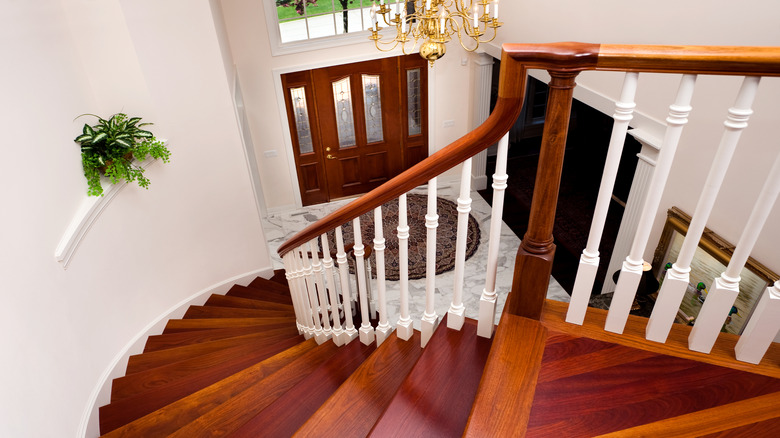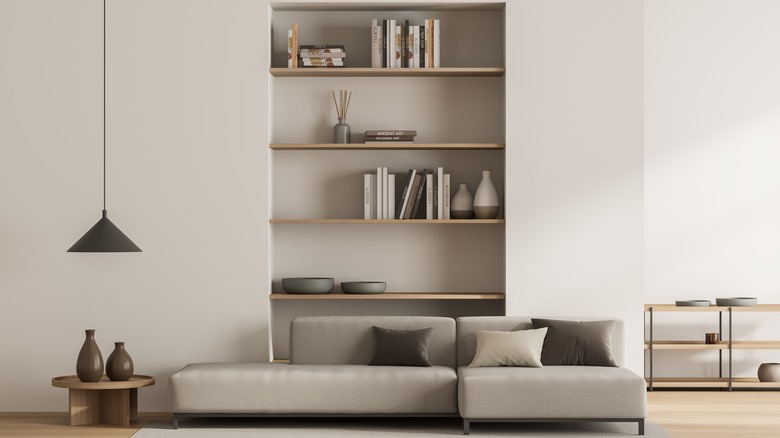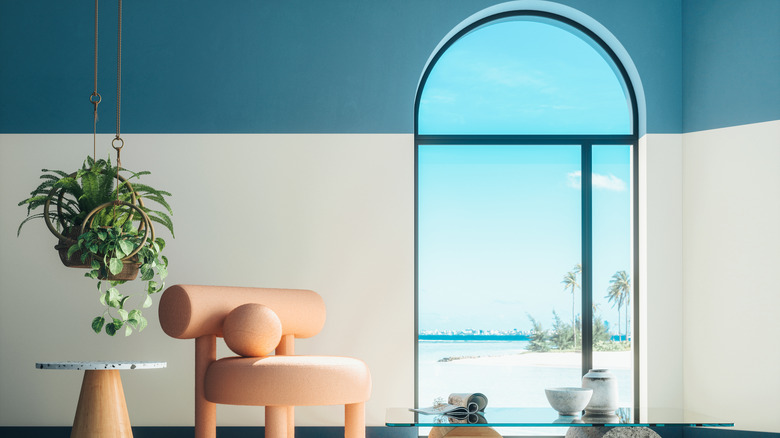Why A Curved Wall May Be Perfect For A Calm Home
From arches to spiral staircases, curves offer a variety of psychological and aesthetically focused benefits to a home. Curved walls aren't exempt from this phenomenon, and with other curved elements around the home growing increasingly popular, like furniture, electronics, and smaller decorative accents, design experts don't see the trend fading away anytime soon. Curved walls radiate a naturally tranquil vibe that can serve as a therapeutic remedy, making them the perfect addition to a home embodying a calm aesthetic.
Curves are scientifically proven to generate a serene feeling among people who observe them, likely due to their ability to remind a person of shapes that appear organically in nature, while dialingdown an individual's fight-or-flight response. Commonly seen in anxiety-inducing settings like airports and hospitals, curved walls have evolved into a poster trend of modern, or futuristic, architecture while working their way into residential interior design as well. Aesthetically, the trend also offers homeowners and designers a fun alternative to the traditional rectangular room shapes they're familiar with, improving a room's flow while adding a touch of elegance and personal charm. Here's more on the calming effect of curved walls, as well as how to incorporate the trend into your space.
Straight lines and edges cause anxiety
The logic behind curved walls creating a relaxing home is tied to the psychological effect that straight walls have on a home's residents. According to a 2007 scientific study from researchers at Harvard Medical School, straight lines and harsh corners trigger the amygdala to activate, the part of the brain responsible for processing imagery and alerting the rest of the body to be fearful or anxious when necessary. When the amygdala is stimulated, our minds may function on high alert for an extended amount of time. Choosing to add smooth and rounded shapes to a space prevents the physical and emotional uneasiness associated with anxiety, producing a calming atmosphere as a result.
Straight and pointy elements can also cause a room or home to come off as cold and uninviting from an aesthetic perspective, heightening a visitor's or resident's anxiety in the process. While straight lines are reminiscent of power and structure, curved lines are softer and easier on the eye due to the phenomenon's occurrence in nature. Softening lines is one of the simplest ways to introduce calm vibes to a space, as our brains naturally comprehend these design elements as non-threatening. While there is a charm to the traditional aesthetic of straight walls, adding an architectural twist by featuring a curved wall as an accent is also a refreshing way to bring life to an otherwise drab setting.
Incorporating curves into your space
If you're considering adding a curved wall to your home's interior, make sure to estimate the cost before going through with a plan. Adding a traditional linear wall can cost a homeowner $1,000-$3,000 on average, with some construction projects nearing $10,000. Expect a curved wall to cost even more to install, since doing so is more challenging for contractors when compared to installing straight walls with 90-degree angles for corners.
In terms of decorating, less is more when it comes to curved walls. You don't need to add an eye-popping coat of paint or sheet of wallpaper to enhance the accent further. A blank, curved white wall or one featuring elegant crown molding or wainscoting adds a fun flair without overshadowing other elements of the room. Also, avoid incorporating too many curved accents into your home. This may make the space feel too busy or chaotic. As with all other elements of interior design, balance is key.
You don't need to add a wall to reap the benefits of curved architecture, nor does the implementation of curves have to be restricted to the common areas of your home. Add them to your bedrooms, bathrooms, or any private work or lounging spaces. Look for furniture pieces and accents with rounded corners to decorate your house, which shouldn't be difficult to find in stores carrying contemporary styles. For bathrooms, explore rounded features, which are commonly seen in bathtubs, toilets, and sinks.


